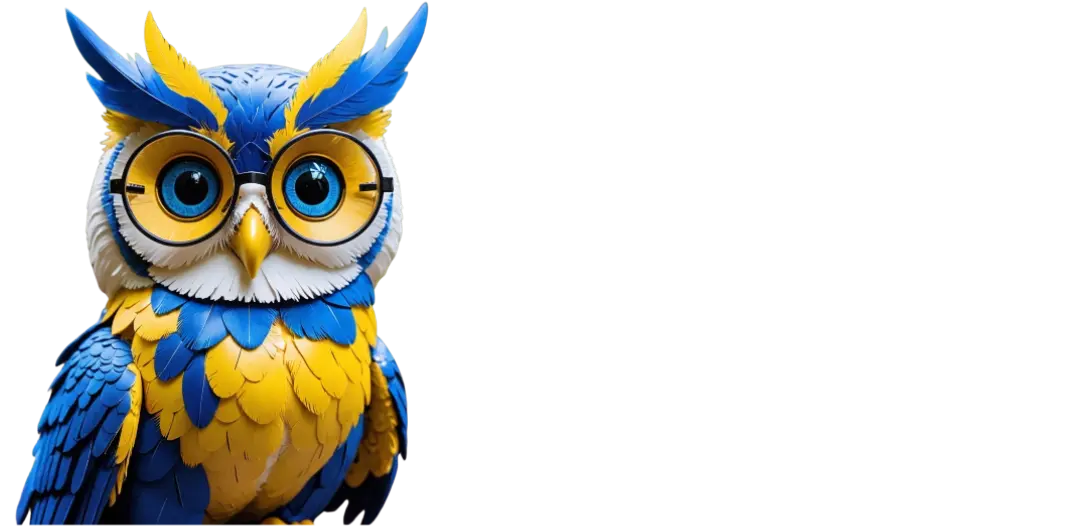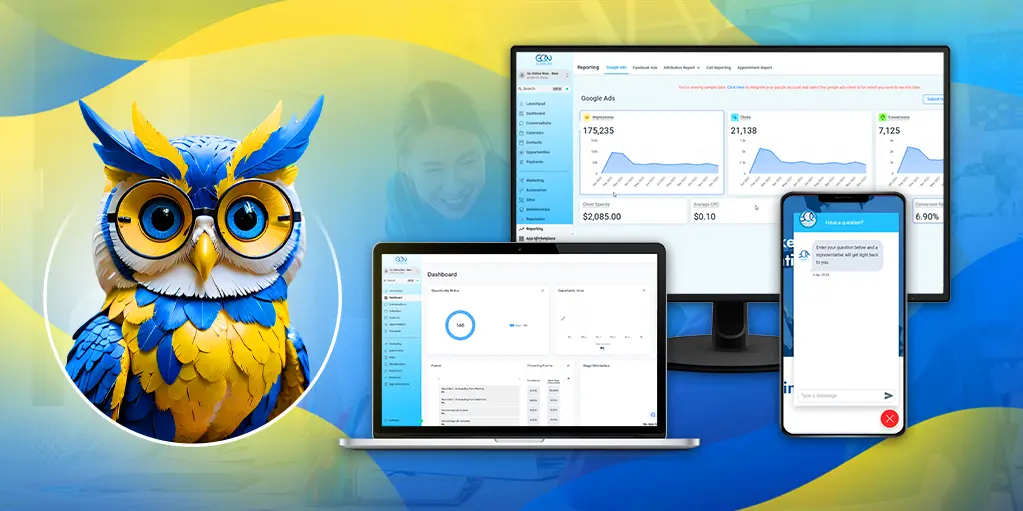Hello and welcome back to our weekly blog. Today, we’ll look at one of the most crucial aspects of digital marketing: content marketing. Whether you own a small business or a large corporation, having a solid content strategy is critical to success in today’s digital landscape.
So, exactly what is Content Marketing? It is the process of creating and distributing valuable, relevant, and consistent content in order to attract and retain a clearly defined audience. The primary goal of Content Marketing is to encourage profitable customer actions such as sales, leads, and engagement.
Here are some best practices to follow to ensure success with Content Marketing:
Develop a Strong Content Strategy
You must have a solid strategy in place before creating any content. Identifying your target audience, conducting keyword research, setting goals, and defining your brand voice and tone are all part of this process.
Creating a solid content strategy is an important step in the content marketing process. A well-thought-out content strategy will assist you in creating valuable and engaging content that will resonate with your target audience, drive traffic to your website, and increase conversion rates.
The first step in creating a solid content strategy is identifying your target audience. Who do you want to reach out to with your content? What are their interests, problems, and requirements? Understanding your target audience will allow you to create content that speaks directly to them, addresses their pain points, and solves their problems.
The following step is to do keyword research. The process of identifying the most relevant and valuable keywords and phrases that your target audience is searching for online is known as keyword research. This assists you in creating SEO-friendly content that ranks higher in search engine results pages and drives more organic traffic to your website.
Setting specific goals is also essential for developing an effective content strategy. Your objectives could include increasing website traffic, generating more leads, increasing engagement, or raising brand awareness. Once you’ve established your objectives, you can develop a content strategy to help you achieve them.
Another critical component of your content strategy is defining your brand’s voice and tone. The voice and tone of your brand should reflect your company’s values, personality, and mission. Your tone of voice should be consistent if you want to establish a strong brand identity and build trust with your target audience.
In conclusion, creating a solid content strategy is a critical component of content marketing success. You can create valuable, engaging content that resonates with your audience and drives business results by identifying your target audience, conducting keyword research, setting clear goals, and defining your brand voice and tone.
SEO based content
To improve your ranking in search engine results pages (SERPs), your content should be optimized for search engines, including keywords, meta tags, and descriptions.
SEO-friendly content is an essential component of any content marketing strategy. Search engine optimization ensures that your content is visible and easily discoverable by your target audience. Here are some important factors to consider when creating SEO based content:
Keywords are the search terms and phrases that your target audience uses to find content about your company. You can improve your ranking in search engine results pages by conducting keyword research and identifying relevant and high-volume keywords to incorporate into your content.
Meta tags are HTML tags that provide search engines with information about the content on your website. They include the title, description, and keyword tags for the page. These tags should be descriptive and relevant to your page’s content, as they help search engines understand what your page is about and improve its visibility in search results.
Descriptions: In search engine results pages, descriptions are short summaries of your content that appear beneath the title. To entice users to click through to your website, they should be compelling, relevant, and include your target keywords.
In addition to optimizing your content for search engines, make sure it adds value to your target audience. High-quality content that provides useful information, solves problems, and addresses pain points will attract and engage your audience naturally.
It’s also important to remember that search engines’ algorithms are constantly evolving in order to provide the best possible results to their users. As a result, staying current on the latest SEO trends and best practices is critical to ensuring that your content continues to perform well in search results.
In conclusion, SEO based content is an essential component of any content marketing strategy. You can increase traffic to your website by optimizing your content for search engines with relevant keywords, meta tags, and descriptions. However, it is equally important to provide value to your audience and keep up with the latest SEO trends to ensure long-term success.
Consistent Blogging
Consistently producing new and informative blog content is an excellent way to attract and engage your target audience. It is critical to keep your blog updated with useful and relevant information for your audience.
Consistent blogging is an effective content marketing strategy for establishing your brand as an authority in your industry, attracting new visitors to your website, and engaging with your target audience. However, simply creating blog content is insufficient; you must also ensure that it is of high quality, relevant, and informative.
Here are some pointers to assist you in creating consistent, high-quality blog content:
Create a content calendar: A content calendar allows you to plan and organize your blog content ahead of time. This can help you stay on track and ensure a steady flow of content throughout the year. Your content calendar should be regularly updated and include topics, deadlines, and assigned writers.
Identify your target audience: Understanding your target audience is critical for creating blog content that is relevant to them. When creating blog topics and content, keep their interests, pain points, and needs in mind.
Focus on quality over quantity: While it is important to create consistent blog content, it is also critical to ensure that it is of high quality and valuable to your target audience. Aim to create content that is informative, engaging, and actionable, rather than simply publishing content.
Include visuals: Images, infographics, and videos can help break up text and make your blog content more engaging and shareable.
Share your blog content on social media and via email marketing to reach a larger audience and drive more traffic to your website. Encourage readers to share your content with their own networks in order to spread it further.
In conclusion, regular blogging is an essential component of any content marketing strategy. You can create blog content that attracts and engages your target audience, establishes your brand as an authority, and drives business results by planning your content ahead of time, identifying your target audience, focusing on quality, incorporating visuals, and promoting your content.
Compelling Copywriting
Your content should be well-written, interesting, and convincing. To entice your audience to act, use strong headlines, subheadings, and calls-to-action.
Copywriting is an essential component of any successful content marketing strategy. To capture the attention of your target audience and motivate them to take action, your content must be well-written, engaging, and persuasive.
Here are some pointers to help you write compelling copy:
Write for your target audience: Understanding your target audience is essential for creating copy that they will respond to. When writing copy, consider their interests, pain points, and needs, and use language that speaks directly to them.
Use attention-grabbing headlines: Your headlines should be eye-catching and clearly communicate the value of your content. To improve your search engine optimization, use strong, action-oriented language and include keywords.
Subheadings, bullet points, and other formatting elements can help you break up your content and make it more scannable. This makes it easier for readers to find the information they need and increases the likelihood that they will interact with your content.
Include clear calls-to-action: Your content should include clear calls-to-action that encourage your audience to take the next step, whether it’s subscribing to your newsletter, downloading a resource, or purchasing. Use persuasive and action-oriented language, and make it clear what the reader will gain by taking action.
Edit and proofread: Before publishing your content, make sure to carefully edit and proofread it. Correct any spelling or grammar mistakes, and make sure your copy is clear, concise, and easy to read.
In conclusion, compelling copywriting is critical for creating content that captures your target audience’s attention and motivates them to take action. You can create copy that engages and converts your audience by writing for them, using strong headlines, breaking up your content, including calls-to-action, and carefully editing and proofreading.
Visuals
Including visual elements in your content, such as images, infographics, and videos, can help increase engagement and improve the overall user experience.
Visuals play an important role in content marketing by capturing your audience’s attention and communicating information in a more engaging and memorable manner. According to studies, visual content receives significantly more views and engagement than text-only content.
Here are some pointers to help you incorporate visuals into your content effectively:
Ensure that your visuals are of high quality, relevant, and visually appealing. Use professional photos, graphics, or videos that complement and enhance your message.
Break up long blocks of text with visuals: Long blocks of text can be overwhelming and intimidating to readers. Break up text with visuals to make it more visually appealing and scannable. This can also aid in the effective communication of complex information.
Use visuals to tell a story: Visuals can be used to tell a story or convey a message that is relevant to your content. This can help your audience remember and engage with your content.
Optimize your visuals for SEO: Use descriptive file names, alt text, and captions that include relevant keywords to optimize images and videos for search engines. This can aid in the ranking of your content in search engine results pages.
Make sure your visuals are accessible to all users, including those who are blind or visually impaired. Provide alternative text descriptions for images and videos, and ensure that screen readers can read them.
In conclusion, incorporating visuals into your content is a powerful way to boost engagement and improve user experience. You can create content that captures the attention of your audience and drives business results by using high-quality visuals, breaking up text, telling a story, optimizing for SEO, and ensuring accessibility.
Social Sharing
Using social sharing media platforms like Twitter, Facebook, and LinkedIn to promote your content can help increase visibility and drive traffic back to your website.
Social media platforms are a great way to promote your content and reach a larger audience. You can increase visibility, drive traffic back to your website, and engage with your audience by sharing your content on social media.
Here are some suggestions for effectively promoting your content on social media:
Choose the right platforms: Determine which social media platforms your target audience is most active on and concentrate your efforts there. LinkedIn, for example, may be better suited to B2B companies, whereas Instagram may be better suited to B2C companies.
Make shareable content: Make content that is relevant, valuable, and easy to share. Blog posts, infographics, videos, and other types of content that your audience is likely to find useful and interesting can all be included.
Optimize for each platform: Each social sharing media platform has its own set of content and formatting requirements. Make sure your content is visually appealing and easy to read for each platform.
Use hashtags: To increase visibility and reach on social media, use relevant hashtags. To increase visibility and reach, research popular hashtags in your industry and include them in your posts.
Engage with your audience: Social sharing media allows you to interact with your audience and build relationships. To increase engagement and foster a sense of community, respond to comments, answer questions, and share user-generated content.
To summarize, social sharing media is an excellent way to promote your content and reach a larger audience. You can effectively promote your content on social media and drive business results by selecting the right platforms, creating shareable content, optimizing for each platform, using hashtags, and engaging with your audience.
Guest Posting
Contributing content to other websites in your industry can help you reach a new audience while also gaining backlinks to your own.
A content marketing strategy in which you contribute articles or blog posts to other websites in your industry is known as guest posting. This strategy can assist you in reaching out to a new audience, increasing brand awareness, and generating backlinks to your website.
Here are some pointers to help you use guest posting as a content marketing strategy effectively:
Determine relevant websites: Determine which websites in your industry accept guest posts. Look for websites with a similar target audience and that focus on topics related to your brand.
Before submitting a guest post, thoroughly research the guidelines for each website. Formatting, word count, and content requirements can all be included in guidelines.
Make high-quality content: Make high-quality content that is relevant and valuable to the website’s audience. Your content should be well-written, educational, and entertaining.
Include a call-to-action in your guest post that encourages readers to visit your website or interact with your brand in some way.
Follow up: After your guest post has been published, contact the website owner to thank them for the opportunity and promote it on your own social media channels.
In conclusion, guest posting is an effective content marketing strategy that can assist you in reaching a new audience, building your brand, and generating backlinks to your website. You can effectively use guest posting as part of your content marketing strategy by identifying relevant websites, researching guidelines, creating high-quality content, including a call-to-action, and following up.
Influencer Outreach
Collaborating with industry influencers can help you reach a larger audience and raise brand awareness.
Influencer outreach is a content marketing strategy in which you collaborate with industry influencers to reach a larger audience and raise brand awareness. Influencers are people who have a large social media following and are considered experts or thought leaders in a specific industry or niche.
Here are some pointers to help you use influencer outreach as a content marketing strategy effectively:
Identify influential people in your industry or niche who have a large following and are relevant to your brand. Look for influencers who share your brand’s values and target demographic.
Contact influencers: Once you’ve identified relevant influencers, contact them to introduce yourself and your brand. Be clear about your objectives and the benefits of working with your brand.
Provide value: In exchange for their collaboration, provide value to the influencers. This can include special access to your products or services, discounts, or other perks.
Collaborate on content: Work with influencers to create content that is consistent with your brand’s values and goals. Sponsored posts, product reviews, and other types of content that the influencer’s audience will find useful and engaging are examples of this.
Analytic tools can be used to track the results of your influencer outreach campaign. Engagement, reach, and conversions are examples of such metrics.
In conclusion, influencer outreach is an effective content marketing strategy that can help you reach a larger audience and raise brand awareness. You can effectively use influencer outreach as part of your content marketing strategy by identifying relevant influencers, reaching out to them, offering value, collaborating on content, and tracking results.
Analytics Tools
Track and measure the performance of your content using analytics tools like Google Analytics. This will assist you in determining what is and is not working so that you can make data-driven decisions.
Analytics tools are critical for assessing the effectiveness of your content marketing strategy. They provide valuable insights into the performance of your content, allowing you to make data-driven decisions to improve your strategy.
Google Analytics is one of the most widely used analytics tools. It contains a wealth of information about website traffic, user behavior, and engagement metrics. Here are some examples of how you can use Google Analytics to assess the effectiveness of your content marketing strategy:
Track website traffic: Use Google Analytics to track the number of visitors to your website, as well as where they came from, which pages they visited, and how long they stayed.
Monitor engagement metrics such as bounce rate, time on page, and pages per session. This will assist you in determining which content is resonating with your audience and which content needs to be improved.
Monitor conversion rates: Use Google Analytics to set up conversion tracking to see how many visitors are taking specific actions on your website, such as making a purchase or filling out a form.
Use Google Analytics to determine which pieces of content are generating the most traffic, engagement, and conversions. This will assist you in replicating your success and optimizing underperforming content.
Refine your strategy: Use Google Analytics data to fine-tune your content marketing strategy. Experiment with various types of content, keywords, and distribution channels to see how they affect your results over time.
In conclusion, analytics tools such as Google Analytics are critical for measuring the effectiveness of your content marketing strategy. You can optimize your content marketing strategy for success by tracking website traffic, measuring engagement, monitoring conversion rates, identifying top-performing content, and refining your strategy based on data.
In conclusion
Content marketing is an essential component of any effective digital marketing strategy. By adhering to these best practices, you will be able to create and distribute valuable content that attracts and engages your target audience, drives profitable customer action, and assists you in meeting your business objectives.
Curious how online marketing could help your organization reach its marketing goals? Contact me if you want to grow your business, get more clients and spend less money on professional and effective online marketing activities by filling out the form https://bit.ly/3p0bBS5 or book a zoom meeting at your convenience, https://bit.ly/3TR3Wn6 and let me answer all your queries.





